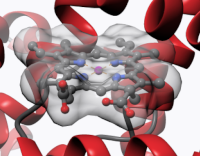Reading List
A list by Biophysics Colab
Articles that are being read by Biophysics Colab.

Showing page 18 of 55 pages of list content
-
Allosteric Cholesterol Site in Glycine Receptors Characterized through Molecular Simulations
This article has 3 authors: -
PIEZO1 regulates leader cell formation and cellular coordination during collective keratinocyte migration
This article has 5 authors: -
Cryo-EM structure of the tetra-phosphorylated R-domain in Ycf1 reveals key interactions for transport regulation
This article has 4 authors: -
-
Structural insights into sphingosine 1-phosphate receptor 4 activation
This article has 24 authors: -
Distinct roles of the major binding residues in the cation-binding pocket of MelB
This article has 4 authors: -
A versatile functional interaction between electrically silent KV subunits and KV7 potassium channels
This article has 11 authors: -
Magnesium Transporter MgtA revealed as a Dimeric P-type ATPase
This article has 10 authors: -
Domain coupling in activation of a family C GPCR
This article has 8 authors: -
Multimodal intrinsic activation of GPCRs in ultrastable plasma membrane nanodomains
This article has 16 authors: -
CTFFIND5 provides improved insight into quality, tilt, and thickness of TEM samples
This article has 4 authors:This article has been curated by 1 group:Reviewed by eLife
-
Depletion of membrane cholesterol modifies structure, dynamic and activation of Nav1.7
This article has 6 authors: -
-
-
Chlorpromazine inhibits EAG1 channels by altering the coupling between the PAS, CNBH and pore domains
This article has 6 authors: -
Building predictive Markov State Models of ion channel permeation from Molecular Dynamics
This article has 6 authors: -
Structural Determinants for Activity of the Antidepressant Vortioxetine at Human and Rodent 5-HT 3 receptors
This article has 16 authors: -
Structural shifts in TolC facilitate Efflux-Mediated β-lactam resistance
This article has 7 authors: -
-
Turgor and the conformational pathway for MscS recovery
This article has 2 authors: